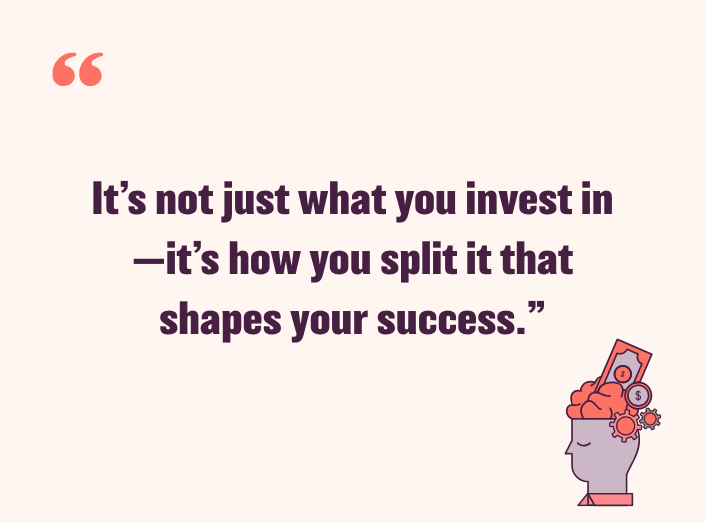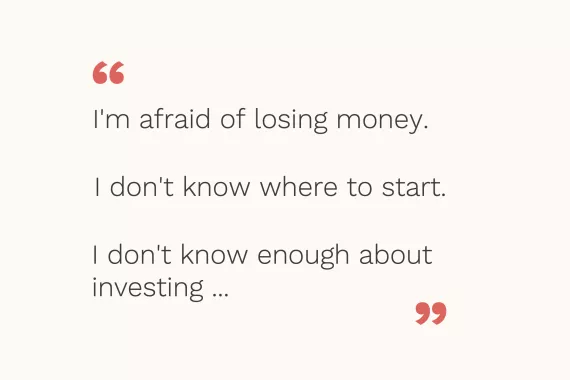Let’s break it down what is asset allocation, and why does it matter?
If you’re investing with the future in mind, how you split your money across different types of assets can be just as important as what you invest in. That’s where asset allocation comes in.
At its core, asset allocation is simply the way you divide your investments between different categories such as shares, bonds, property, and cash. The goal is to balance risk and reward based on how long you plan to invest, what you’re aiming for, and how comfortable you are with market ups and downs.
In 2025, long-term investors have more tools, more choices, and more flexibility than ever. But the basics of a smart, long-term strategy have not changed. A well-diversified mix remains one of the most reliable ways to build wealth steadily and reduce stress when the markets wobble.

What does long-term investing actually mean?
When we talk about long-term investing, we’re usually thinking in terms of years, not months. For most people, this includes things like retirement savings, building wealth for future generations, or investing for a child’s future.
The advantage of a longer timeframe is that it gives your investments time to ride out market dips and benefit from compounding. It also allows you to take on a bit more risk in search of better returns, knowing you won’t need to cash out any time soon.
So if you're planning to invest for at least five to ten years or longer, you’re in a great position to make asset allocation work in your favour.
The best asset allocation for long-term investing in 2025
There’s no single "best" allocation that works for everyone. But there are some general principles that can help guide your choices. A strong long-term portfolio usually puts most of its weight behind growth assets, especially global shares, while keeping some room for stability with bonds or other lower-risk investments.
Shares, or equities, are often at the heart of long-term investing. That’s because they tend to offer the highest returns over time, even though they can be volatile in the short term. A portfolio that leans heavily on equities might feel bumpy in some years, but historically, it tends to outperform more conservative mixes over the long run.
If you're starting your investment journey in your twenties, thirties or even forties, it’s common to hold a larger percentage in shares. Many investors choose to add some government or corporate bonds to smooth out the journey, especially if they want a bit more peace of mind.
Cash or money market funds can be useful too, but usually only in small amounts for liquidity, not long-term growth. Cash rarely keeps up with inflation over long periods, so holding too much can slow down your portfolio.

Asset allocation by life stage (not a rule, just a guide)
As a general starting point, younger investors with longer horizons might hold a high proportion of shares, sometimes 80 percent or more. People in their 50s and 60s often begin to shift some of that growth into more stable investments to protect what they’ve built.
That transition does not need to happen all at once. Many people gradually adjust their asset mix over time, a process known as rebalancing or lifestyling. The goal is to match your portfolio to your life, not the other way around.
Why diversification still matters in 2025
One of the golden rules of asset allocation is not putting all your eggs in one basket. That applies not only to choosing different asset types, but also to spreading your investments across different regions and sectors.
A portfolio made up entirely of UK shares, for example, might miss out on opportunities elsewhere or be more affected by local economic changes. Global funds or multi-asset portfolios help reduce that risk and offer more consistent returns over time.
In 2025, there’s growing interest in including newer asset types like infrastructure, sustainable investments, or even alternative assets like real estate investment trusts (REITs). These can be part of a well-diversified long-term plan, but they should complement not replace, your core mix of shares and bonds.

Managing your asset allocation over time
Once you’ve set up your allocation, the next step is making sure it stays balanced. As the markets move, your portfolio may naturally drift away from your original mix. That’s why regular check-ins once or twice a year are a good habit.
Rebalancing helps keep your risk level where you want it. That might mean shifting a bit of your portfolio from shares into bonds, or topping up one area that’s lagging behind. Most platforms offer tools to help you do this, and some even automate it for you.
As your life changes, your goals and risk tolerance might change too. Big life events like marriage, a new job, or preparing for retirement are all moments to review your plan and adjust if needed.
Final thoughts: focus on what you can control
The markets will always have ups and downs. But the way you build and manage your portfolio is something you can take charge of.
A strong asset allocation for long-term investing is not about reacting to headlines. It’s about staying consistent, keeping costs low, and making smart decisions based on your personal goals.
Whether you're just starting out or refining an existing plan, having the right mix of assets can help you grow your wealth with confidence, and without unnecessary stress.

Ready to build your long-term investment strategy with less stress?
Download our free app and take control of your investing journey from day one.
Inside, you’ll find easy-to-use tools to create your ideal asset allocation, track your goals, and get tailored guidance based on your risk level and timeline.
No jargon. No spreadsheets. Just smart, supportive investing made simple.
👉 Download the app now and start building your future, one smart step at a time
Your future is worth planning for and our app makes it easier than ever.
-
Why you don't need to be afraid of investing.
Our 15 minute webinar is aimed at encouraging more women to take the plunge – but really, the facts apply to anyone who might be t... -
What investment products are there and which one is right for me?
Is one of your goals to start investing? Wondering where to start? Our 20-minute, free webinar will give you a good start on how t...

